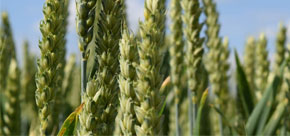Crops & Sugar Beet Standards
ENVIRONMENT IMPACT/CONSERVATION AND SUSTAINABILITY Version 5.1 (modified)
Click to view
Key – Those standards which have greater significance (all other standards are normal)
Recommendation – Those which do not affect certification
New – A completely new standard which the member must now adhere to
Revised – A standard that has changed and requires the member to take some different or additional action to before
Upgraded – The standard has been upgraded to a Key standard or from a Recommendation to a full standard
Appendix – Referenced in ‘How you will be measured’. Indicates that additional information is provided in the Appendices, which are available at the end of each section.
CR.EI.1
Producers must be aware of any practices that have an adverse environmental impact
How you will be measured
CR.EI.1.a
CR.EI.1.b
CR.EI.2
A mass balance must be in place
How you will be measured
CR.EI.2.a
CR.EI.2.b
CR.EI.2.c
CR.EI.2.d
Mass balance records
CR.EI.3 Key
Crops and sugar beet that may be used to produce biofuels and bioliquids must not be produced on land that had one of the following statuses on or after Jan 2008:
- a high biodiversity value
- land with high carbon stock
- land that was peatland unless evidence is provided that the cultivation and harvesting does not involve drainage of previously undrained soil
How you will be measured
CR.EI.3.a
More Standards
Download Crops and Sugar Beet Standards Manual
Download the changes to the Crops and Sugar Beet Standards from 1 February 2025
EI.2 – For initial assessments this information may be requested in advance and the set-up of the mass balance system will be verified by the assessor
